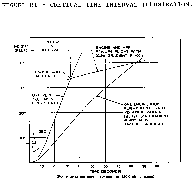Federal Aviation Regulations
Appendix H to Part 23 — Installation of An Automatic Power Reserve (APR) System
H23.1, General.(a) This appendix specifies requirements for installation of an APR engine power control system that automatically advances power or thrust on the operating engine(s) in the event any engine fails during takeoff.
(b) With the APR system and associated systems functioning normally, all applicable requirements (except as provided in this appendix) must be met without requiring any action by the crew to increase power or thrust.
H23.2, Definitions.
(a) Automatic power reserve system means the entire automatic system used only during takeoff, including all devices both mechanical and electrical that sense engine failure, transmit signals, actuate fuel controls or power levers on operating engines, including power sources, to achieve the scheduled power increase and furnish cockpit information on system operation.
(b) Selected takeoff power, notwithstanding the definition of “Takeoff Power” in part 1 of the Federal Aviation Regulations, means the power obtained from each initial power setting approved for takeoff.
(c) Critical Time Interval, as illustrated in figure H1, means that period starting at V1minus one second and ending at the intersection of the engine and APR failure flight path line with the minimum performance all engine flight path line. The engine and APR failure flight path line intersects the one-engine-inoperative flight path line at 400 feet above the takeoff surface. The engine and APR failure flight path is based on the airplane's performance and must have a positive gradient of at least 0.5 percent at 400 feet above the takeoff surface.
 View or download PDF
View or download PDFH23.3, Reliability and performance requirements.
(a) It must be shown that, during the critical time interval, an APR failure that increases or does not affect power on either engine will not create a hazard to the airplane, or it must be shown that such failures are improbable.
(b) It must be shown that, during the critical time interval, there are no failure modes of the APR system that would result in a failure that will decrease the power on either engine or it must be shown that such failures are extremely improbable.
(c) It must be shown that, during the critical time interval, there will be no failure of the APR system in combination with an engine failure or it must be shown that such failures are extremely improbable.
(d) All applicable performance requirements must be met with an engine failure occurring at the most critical point during takeoff with the APR system functioning normally.
H23.4, Power setting.
The selected takeoff power set on each engine at the beginning of the takeoff roll may not be less than—
(a) The power necessary to attain, at V1, 90 percent of the maximum takeoff power approved for the airplane for the existing conditions;
(b) That required to permit normal operation of all safety-related systems and equipment that are dependent upon engine power or power lever position; and
(c) That shown to be free of hazardous engine response characteristics when power is advanced from the selected takeoff power level to the maximum approved takeoff power.
H23.5, Powerplant controls—general.
(a) In addition to the requirements of §23.1141, no single failure or malfunction (or probable combination thereof) of the APR, including associated systems, may cause the failure of any powerplant function necessary for safety.
(b) The APR must be designed to—
(1) Provide a means to verify to the flight crew before takeoff that the APR is in an operating condition to perform its intended function;
(2) Automatically advance power on the operating engines following an engine failure during takeoff to achieve the maximum attainable takeoff power without exceeding engine operating limits;
(3) Prevent deactivation of the APR by manual adjustment of the power levers following an engine failure;
(4) Provide a means for the flight crew to deactivate the automatic function. This means must be designed to prevent inadvertent deactivation; and
(5) Allow normal manual decrease or increase in power up to the maximum takeoff power approved for the airplane under the existing conditions through the use of power levers, as stated in §23.1141(c), except as provided under paragraph (c) of H23.5 of this appendix.
(c) For airplanes equipped with limiters that automatically prevent engine operating limits from being exceeded, other means may be used to increase the maximum level of power controlled by the power levers in the event of an APR failure. The means must be located on or forward of the power levers, must be easily identified and operated under all operating conditions by a single action of any pilot with the hand that is normally used to actuate the power levers, and must meet the requirements of §23.777 (a), (b), and (c).
H23.6, Powerplant instruments.
In addition to the requirements of §23.1305:
(a) A means must be provided to indicate when the APR is in the armed or ready condition.
(b) If the inherent flight characteristics of the airplane do not provide warning that an engine has failed, a warning system independent of the APR must be provided to give the pilot a clear warning of any engine failure during takeoff.
(c) Following an engine failure at V1or above, there must be means for the crew to readily and quickly verify that the APR has operated satisfactorily.
[Doc. 26344, 58 FR 18979, Apr. 9, 1993]
NEXT: Appendix I to Part 23 - Seaplane Loads
PREVIOUS: Appendix G to Part 23 - Instructions for Continued Airworthiness
